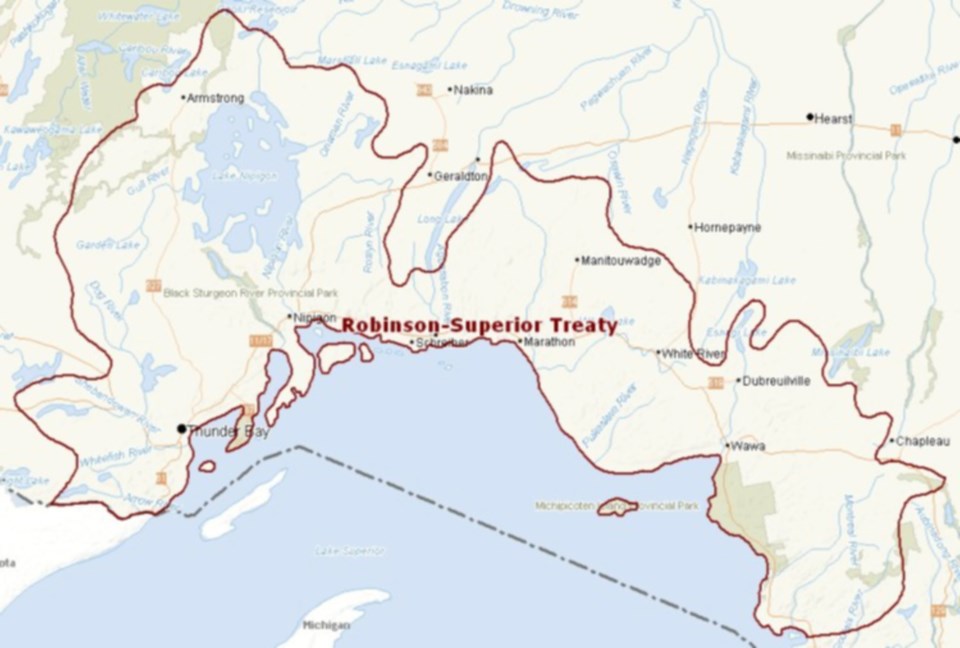Lawyers for the federal and provincial governments have been attempting to poke holes in the testimony of economist David Hutchings during the third stage of the Robinson Superior Treaty annuities case, taking place this week in a makeshift courtroom at the University of Sudbury.
A report by Hutchings on the real value of resource development — more specifically, the net Crown resource-based revenue (NCRR) which includes the revenues from mining, forestry, transportation, hydroelectric and land use sales in RST territory — was cross examined by lawyers for Ontario and Canada, who are disputing some aspects of the report.
Hutchings estimates that the nominal NCRR in Robinson Superior Treaty territory is $1.044 billion. That dollar figure is worlds away from the NCRR provided by economists who testified on behalf of the Crown — a loss of $1.619 billion.
The Ontario government’s experts have also argued in court that the government's “colonization” expenditures — everything from healthcare to railways and roads — are actually “investments” in Indigenous communities, with the amount spent exceeding revenue from natural resources in the treaty territory by nearly $8 billion.
After 170 years of virtually unchanged payments, Ontario says Robinson Superior Treaty beneficiaries are owed just $35 million, if anything at all.
Hutchings, who was cross-examined Tuesday and Wednesday, told the court that while he’s not disputing the dollar figures pulled from provincial records, he disagrees with how Ontario’s economic experts are using those numbers to calculate Ontario's expenditures.
Relevant expenditures are being defined in court as Crown expenses related to collecting, regulating and supporting relevant Crown resource-based revenues.
Hutchings says any given line in the province’s public accounts may contain activities that are relevant, irrelevant or partially relevant. There’s a lack of detail in the data, he says, that makes such an analysis “difficult and unreliable.”
“We lack the data to split them apart,” Hutchings said.
The economist also claims that Ontario’s economic experts made some errors in calculating NCRR: fish and wildlife expenses from 1997 to 2011 were included in their calculations, and some expense items were counted twice.
The court heard there’s a nearly 91 per cent difference between the nominal expenses calculated by Hutchings and Ontario’s experts, mostly as a result of different approaches taken by both sides; the single largest difference between them being the treatment of Crown resource expenses after 1945, the bulk of which being forestry expenses post-1960, followed by transportation expenses.
“It’s not so much what the numbers are, but what you do with them,” Hutchings said.
Legal counsel for Canada, meanwhile, took Hutchings to task over the idea of electromagnetic ‘spectrum’ — radio and cell phone frequencies which Hutchings says take from the land through the use of cell and radio towers — as a natural resource.
The spectrum in treaty territory is believed to equal more than $43 billion in net Crown revenues, according to Hutchings’ report.
A separate dispute involving Robinson Huron Treaty annuities, which has been heard simultaneously by Ontario Superior Court Justice Justice Patricia Hennessy, has been adjourned since January while representatives for Ontario, Canada and Robinson Huron Treaty beneficiaries engage in confidential settlement talks.
Both communities have been in court since 2017, seeking billions of dollars in compensation after almost 150 years of receiving small annual treaty payments in return for ceding much of northern Ontario to the Crown as part of both treaties, which were signed in 1850.
The stage three trial of the Robinson Superior Treaty annuities case resumes in Sudbury Feb. 27.
— SooToday




